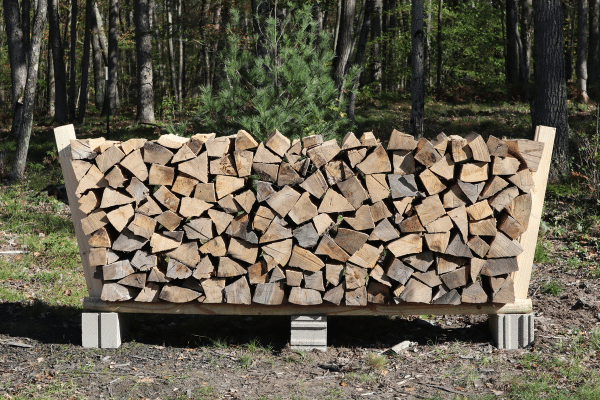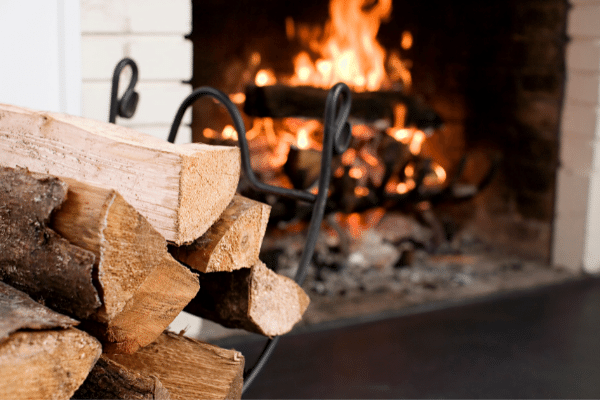- Home
- Types Of Firewood
- What Is Seasoned Firewood
What Is Seasoned Firewood
This post may contain affiliate links so I earn a commission.
What is seasoned firewood and why is it important to be able to identify it?
You’ve heard the term "seasoned firewood" thrown around, but you may not know exactly what it means.
Seasoned firewood gets its name from the traditional process of stacking firewood in the early spring and letting it dry all summer and fall.
You have essentially let your wood dry for a season - hence its name.
While some species of wood might take longer than a single season to dry out, such as red oak which can take up to two years, most firewood types will season in one year if you get an early start on your firewood in the spring.
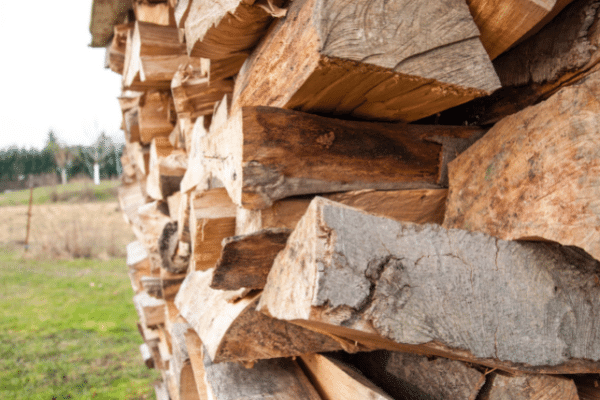
Then, by the time winter comes around and you're ready to burn your firewood to keep warm, it's dry enough to easily light and create a nice, hot flame.
What Is Seasoned Firewood?
Seasoned firewood is firewood that has been cut, split, and correctly stacked so it can dry out the moisture contained within the tree.
Seasoning firewood outside like this reduces the moisture content of the wood from evaporation, causing it to burn better and create less smoke and creosote.
Freshly cut wood, or green wood, averages around 50% moisture.
Seasoning firewood brings that moisture down to a recommended 20% or lower.
This process usually takes a year or more, depending on the type of firewood you are seasoning.
Why Is Burning Seasoned Firewood Better Than Burning Green Wood?
Trying to burn green firewood is extremely frustrating.
It's hard to light, creates a lot of smoke, and only gives off a small amount of heat.
Due to green firewood's high moisture content, keeping a wet log burning can sometimes feel impossible.
If you have ever had a fire billowing with smoke, and you had to keep blowing on the fire to keep it going, you were most likely trying to burn green wood.
Whether you want a roaring fire inside your fire pit, or you're simply trying to start a campfire, using dry firewood is essential.
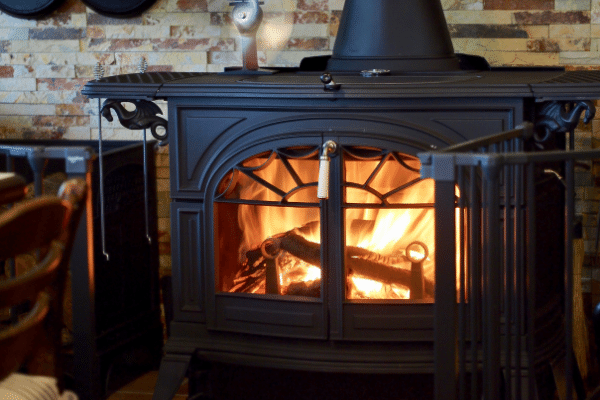
Also, if you're building a fire inside a fireplace or wood stove, there will
be less creosote buildup with seasoned firewood than green wood.
In fact, burning wet firewood inside a chimney is one of the leading causes of creosote and chimney fires.
When you try to burn wet firewood, all of the fires energy is used to evaporate the moisture inside the wood.
This causes your fire to smoke and sizzle, allowing unburned particles to travel up your chimney and adhere to the inside of the chimney walls in the form of creosote.
Burning dry, seasoned firewood can help dramatically reduce the odds of creosote forming inside your chimney.
Tips For Seasoning Firewood
Now that we've answered the question, "What is seasoned firewood" let's look at some ways to make sure your firewood is dry and ready to burn.
While each species of tree will season a little differently, the basic process is the essentially the same for all firewood types.
- After felling, cut your logs into consistent lengths. Remember, shorter is better than longer.
- Split your logs into firewood less than 6 inches (15 cm) across.
- Keep your firewood elevated and off the ground. Old industrial pallets work great for this and can often be found for free.
- When stacking your firewood, find a place where the sun can warm all sides of the stack and the wind can blow through it. Allow enough room between rows (6-12 inches) so the wind can flow throughout the entire stack.
- Use a firewood cover. Something like a lean-to-style roof over your wood is ideal for keeping the rain and snow off your stack.
Check your firewood with a moisture meter to know if you have correctly seasoned your firewood to under 20%.

These can be purchased online for about $20-$30 and are great tools for quickly determining if the wood is ready to safely burn.
You can also check your firewood by looking for indicators of dried wood, such as a lightweight feel to the wood, cracks along the ends, and a hollow sound to the logs when knocked together.
How Long Does It Take Firewood To Season?
As mentioned above, firewood can take up to a year or more to properly season.
However, this timeline can vary wildly based on a few things.
If you live in a northern, more wet climate, your firewood will take longer to dry versus somewhere southern, dryer, and sunnier.
The wood type will also play a significant role in the length of time it will take your firewood to season.
Hardwood, a better wood for burning inside a fireplace or wood stove, takes longer to dry than softwood.
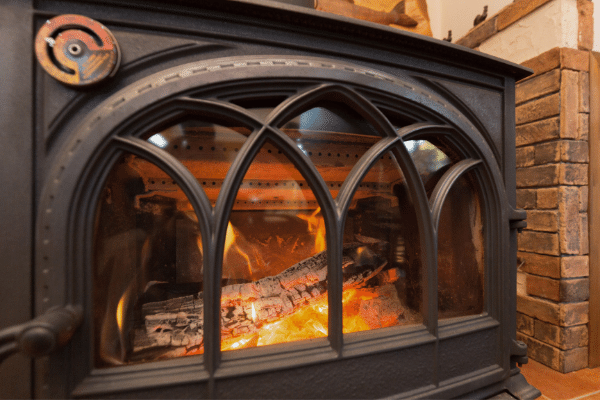
When you can't wait a whole year for seasoned firewood, using a softwood can help speed up the process.
Although softwoods don't create as many BTUs as a hardwood, they're less dense and will typically dry out within 6-8 months.
Softwoods are a great option for campfires because they burn hot, bright and don't leave long lasting coals that are difficult to extinguish when you're done with the fire.
The Best Way To Stack Firewood
Stacking firewood is somewhat of an art.
There's a lot of different theories on which methods work the best, but you essentially need sun, wind and time.
You are looking for optimal airflow through your logs to really dry them out.
Choose a location that is not sheltered from the warm summer winds.
The location of your pile is vital as well.
It needs to receive plenty of sunlight, or else you risk mold and mildew growing on the wood.
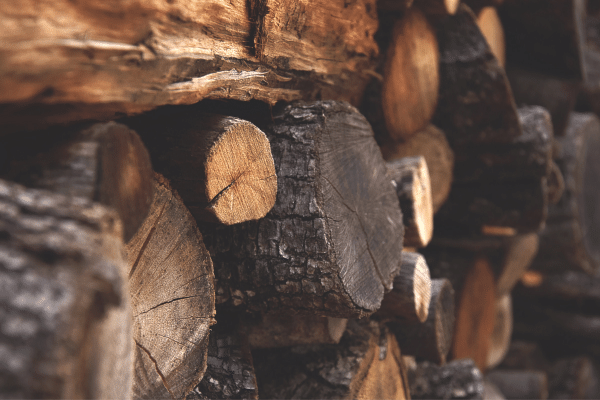
Ensure your pile is away from any structures
like your house (this will reduce pest problems), garage, or outside structures.
You should never attempt to dry firewood out inside your basement or garage.
Since these spaces are typically dark and damp to begin with, your firewood will develop mold before it has enough time to dry out.
The smaller you cut your wood, and the better you stack it, the quicker it will dry.
Just remember that small pieces of wood will burn faster than large rounds.
If you have plenty of time for the wood to dry, split some pieces small and leave some larger rounds for a good overnight burn in a wood stove.
What Is Seasoned Firewood - Buyer Beware
If you choose to purchase your seasoned firewood, choose your store or company carefully.
Many businesses will throw cut logs into a pile and let them sit for a while.
They sometimes refer to this wood as seasoned.
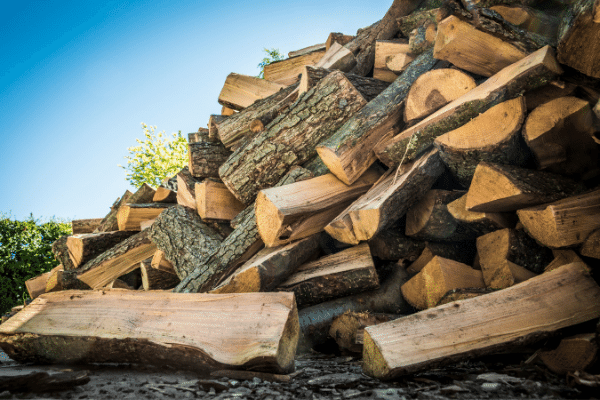
While the tops of these piles may have
seasoned nicely from the sun, the insides of these piles will be damp and moldy since the sun and wind can not penetrate to the middle of the pile.
This is why it's important to stack firewood in rows so that all sides of the wood receive airflow.
Large piles lead to inconsistent fires where some may be wonderful, and others may be frustrating, smoky, and similar to burning green wood.
Burning Kiln Dried Firewood
If you are a camper, you know that state and national parks have banned the transportation of firewood.
Bringing firewood into a campsite needs a ticket to show that you purchased it in town, or you can typically purchase from the campsite itself (although this can be pricy!).
These regulations are all because seasoned firewood can carry invasive pests.
The emerald ash borer, and the Asian longhorn beetle, for example, were spread partially through moving firewood across state or county lines.
An alternative to seasoned firewood is kiln dried firewood.
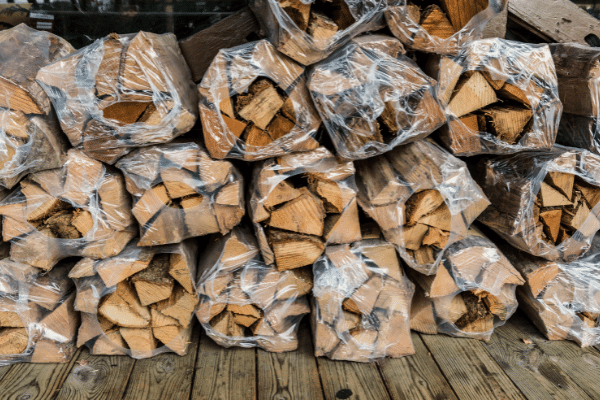
Kiln dried firewood is wood that has been
baked and dried in a kiln for three to six days.
Kiln dried wood will consistently be at 18% moisture, which has many benefits, including consistency in all of your firewood.
Because kiln dried is dryer than seasoned, it will light easier, produce less smoke, and burn more efficiently.
The burning process also treats the pest problem, killing any bugs in the wood during the heating process.
However, kiln dried firewood needs to be purchased (assuming you don’t have a kiln), which can defeat the purpose of self-sufficient heating.
Purchasing kiln dried firewood will also cost you 10-30% more than purchasing from a seasoned firewood provider.
Kiln dried firewood will also burn quicker, meaning you will need more firewood, especially if you are prone to large fires.
What Is Seasoned Firewood - Overall
Whether you plan on heating your home with wood throughout the winter, or you simply want to create a nice backyard fire, burning seasoned firewood is important.
Take the time to plan ahead buy cutting your firewood in the early spring and making sure it's properly split and stacked.
Then, when it's time to enjoy the fruits of your labor, you can sit back and relax beside the warm, comforting flames.
